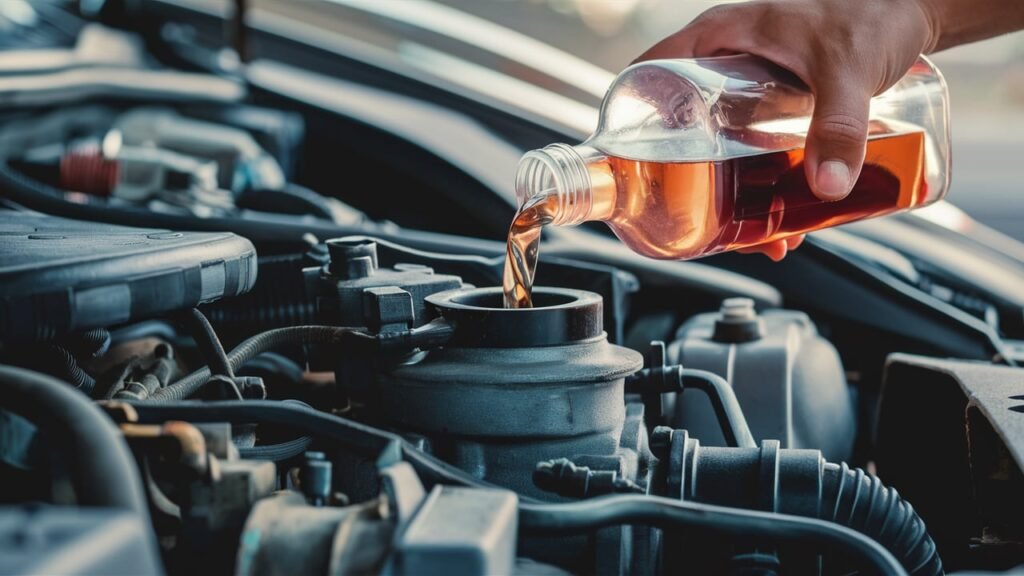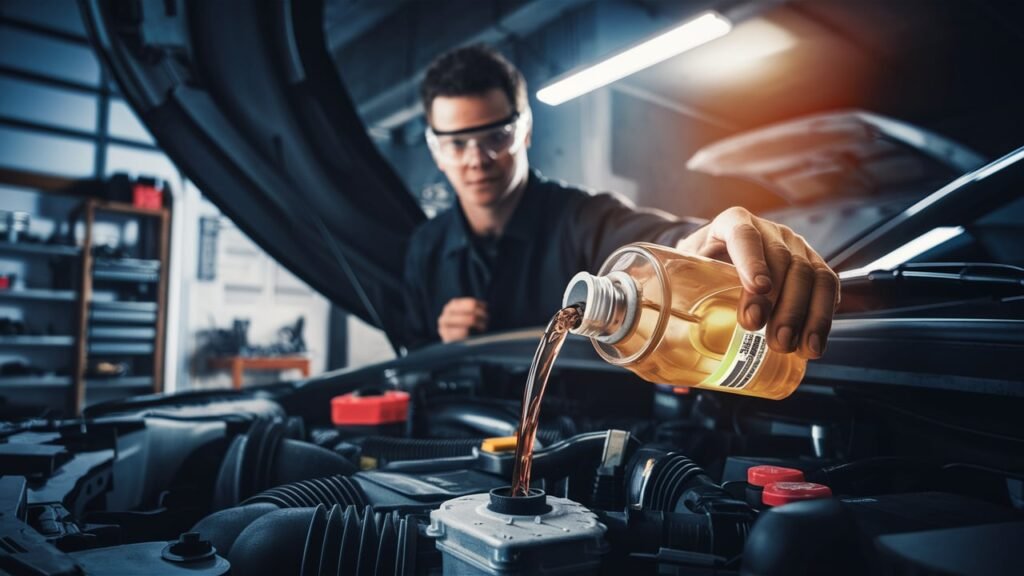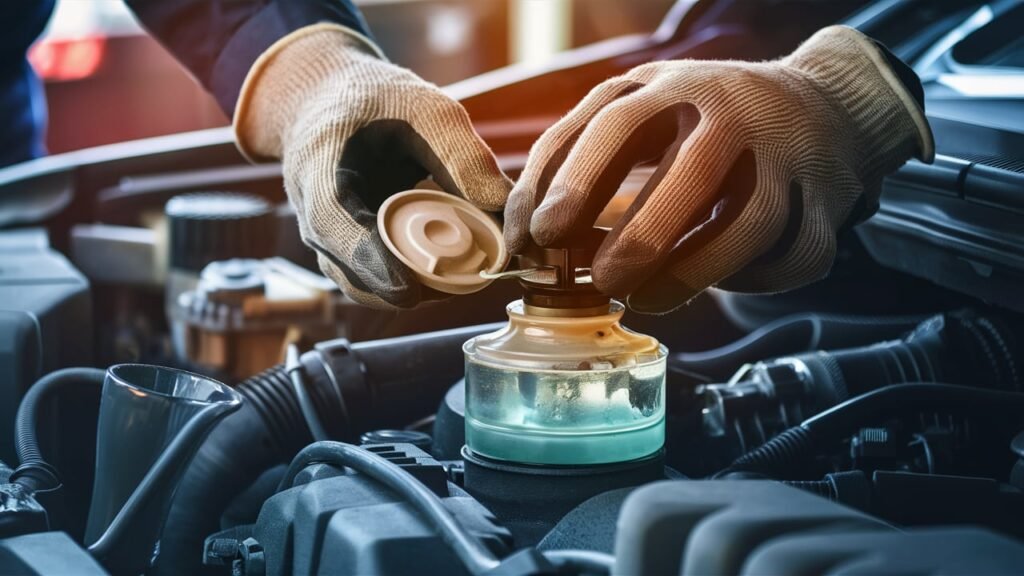
Crucial Steps to Adjusting Your Car Engine Brake Fluid Level
Understanding the intricacies of your vehicle’s braking system goes beyond merely hitting the brake pedal. Adjusting your car engine brake fluid level serves as a crucial aspect of maintaining optimal braking performance and ensuring safety on the road.
Defined as the process of adding or removing brake fluid in the system to achieve the manufacturer’s recommended levels, this undertaking requires precision and attentiveness. Regularly adjusting your car engine brake fluid level is paramount, akin to changing oil or inspecting tire pressure routinely.
The importance of vigilantly checking and adjusting brake fluid levels cannot be overstated for automotive enthusiasts, DIY car maintenance hobbyists, mechanics, and all conscientious vehicle owners. Brake fluid acts as a vital component in hydraulic braking systems, transmitting force generated by pressing the brake pedal to stop the vehicle effectively.
Neglecting to monitor and adjust its levels can lead to compromised braking efficiency, potentially endangering both occupants and other road users.
With an emphasis on proactive maintenance practices, understanding how to manage your car engine’s brake fluid becomes indispensable knowledge for every responsible car owner. In this article, we delve into 8 crucial steps that elucidate the process of adjusting your car engine brake fluid level with precision and expertise.
Understanding Brake Fluid.
Brake fluid serves as a crucial component within a vehicle’s braking system, playing a pivotal role in transferring force from the brake pedal to the brake components at each wheel. In essence, it acts as an incompressible medium that amplifies the force applied by the driver on the brake pedal, enabling efficient and reliable braking performance.
Without adequate and properly maintained brake fluid, the system may fail to deliver sufficient stopping power, compromising safety on the road.
There are various types of brake fluids available, each designed for specific uses based on their chemical composition and boiling points. Common variants include DOT 3, DOT 4, and DOT 5.1, distinguished by their viscosity and compatibility with different brake systems.
Using the correct type of brake fluid recommended by the manufacturer is essential to ensure optimal performance and longevity of the braking system. For instance, mixing incompatible brake fluids can lead to decreased effectiveness and potential damage to crucial components like seals or hoses.

The effects of having either low or high levels of brake fluid in your vehicle can significantly impact its overall performance. Inadequate levels of brake fluid can introduce air into the hydraulic system, causing spongy brakes due to air compression instead of transmitting pressure effectively.
Conversely, overfilling the reservoir with excessive amounts of brake fluid can result in overflow during operation or even leakage that may compromise other parts within close proximity. Maintaining the correct level of brake fluid is imperative for preserving not only efficiency but also safety while driving your vehicle.
Tools and Equipment Needed.
Ensuring the proper tools and equipment are at hand is vital when checking and adjusting your car’s brake fluid levels. The following items are essential for a smooth and safe process. Firstly, a clean cloth or rag is necessary to wipe off any dirt or debris around the brake fluid reservoir before opening it.
This simple step helps prevent contaminants from entering the braking system, which could compromise its performance over time. Additionally, a flashlight might be handy if you’re working in low-light conditions under the hood.
When handling brake fluid and related equipment, safety precautions must be a top priority. Eye protection, such as safety glasses or goggles, should always be worn to shield your eyes from potential splashes of corrosive brake fluid.
Disposable gloves are also recommended to protect your skin from direct contact with the fluid, which can cause irritation or burns. It’s crucial to work in a well-ventilated area due to the chemical nature of brake fluid vapors; inhaling these fumes can be harmful to your health.
Using the correct type of equipment for checking and topping up brake fluid levels is essential to maintain the efficiency of your vehicle’s braking system. A turkey baster or syringe with a narrow nozzle can aid in removing excess fluid if needed without spillage.
An automotive funnel designed for brake fluids ensures precise pouring into the reservoir without causing spills or leaks that could lead to contamination.
Always refer to your vehicle manual to confirm which specific type of brake fluid is compatible with your car before proceeding with any adjustments, as using an incorrect variety may damage the braking components and affect performance adversely.
By adhering to these guidelines on tools, safety practices, and equipment selection, you set yourself up for success when tackling the task of adjusting your car’s engine brake fluid level. Prioritizing safety and precision during this process will help maintain your vehicle’s braking system’s integrity while ensuring optimal performance on the road ahead.
Step-by-Step Guide to Adjusting Brake Fluid Level.
To begin adjusting your car’s brake fluid level, the first step is crucial: park your vehicle on a flat surface and allow it to cool down. By doing this, you ensure safety and accuracy in the process ahead.
After ensuring safety, proceed to locate the brake fluid reservoir situated under the hood of your car. This reservoir usually has a translucent plastic or glass container with level markings for easy visual inspection.
Once you’ve located the brake fluid reservoir, it’s essential to maintain cleanliness before opening it. Step 3 involves cleaning the reservoir cap meticulously before removing it. Contamination can lead to impurities entering the braking system, potentially compromising its efficiency.

Therefore, taking a moment to wipe down the cap can prevent any unwanted debris or particles from getting into the brake fluid.
Moving on to checking the brake fluid level, always adhere to the manufacturer’s guidelines. These guidelines offer precise instructions tailored to your specific make and model of vehicle. By following these instructions diligently, you ensure accurate readings when visually inspecting the level and condition of the brake fluid inside the reservoir.
Understanding how different levels are displayed and interpreted within the reservoir is key in determining whether adjustment is necessary for optimal braking performance.
Adjusting Brake Fluid Level Safely.
When it comes to maintaining your car’s brake system, ensuring the brake fluid level is adequate is crucial for optimal performance and safety. Step 4 involves adding brake fluid gradually to the reservoir. It is essential to do this carefully, a little at a time, to avoid overfilling the reservoir.
Overfilling can lead to pressure buildup in the system, potentially causing issues like pedal sponginess or even damage.
Using a funnel, as mentioned in Step 5, is more than just a convenience; it helps prevent spillage and contamination. Brake fluid is hygroscopic, meaning it absorbs moisture from its surroundings. Contaminated brake fluid can compromise braking efficiency and lead to corrosion within the system components.
By using a funnel when adding brake fluid, you minimize the risk of introducing contaminants that could affect your brakes’ performance.
In the event of any spilled brake fluid during the topping-up process, it’s vital to clean it up promptly and carefully without harming surrounding components. Brake fluid is corrosive and can damage paintwork and some materials on contact.
Therefore, using rags or paper towels specifically designated for this purpose ensures that any spills are cleaned effectively without causing unintended harm to parts under your vehicle’s hood. By being meticulous in handling spilled fluids, you maintain not just cleanliness but also extend the longevity of various engine components.
Final Checks and Maintenance.
After adding or adjusting the brake fluid to your car’s engine, it is crucial to meticulously close the reservoir cap. The reservoir should be tightly sealed to prevent any contaminants from entering the brake system, as even small particles can compromise braking efficiency.
Remember that any dirt or debris that infiltrates the brake fluid can lead to corrosion of internal components, potentially causing costly damage over time. Securing the cap ensures that your braking system remains protected and operates optimally until the next maintenance check.
The recommended frequency for checking and adjusting brake fluid levels varies depending on your vehicle’s make and model. However, a general guideline is to inspect the brake fluid during every oil change or at least once a year.

Regular checks help maintain proper brake function and prevent potential safety hazards resulting from low or contaminated brake fluid levels. Neglecting this routine maintenance task can have severe consequences, such as reduced braking performance, increased risk of accidents, and even complete brake failure in extreme cases.
Imagine driving down a steep hill with deteriorated brake fluid – a situation where reliable brakes are essential for safety. If you neglect checking and adjusting your car’s brake fluid regularly, you risk compromising your ability to maintain control of the vehicle in critical moments like sudden stops or emergency situations.
By adhering to manufacturer recommendations for maintaining proper brake fluid levels, you not only enhance road safety but also prolong the longevity of your vehicle’s braking components, ultimately saving you from potential breakdowns and costly repairs due to negligence.
Conclusion.
In conclusion, adjusting your car engine brake fluid level is a vital component of vehicle maintenance that directly impacts the safety and performance of your braking system.
By following the 8 crucial steps outlined in this guide, you can ensure that your brake fluid remains at the optimal level to effectively transmit force from the brake pedal to the wheels, enabling efficient deceleration and overall control of your vehicle.
Regularly checking and adjusting your brake fluid levels not only enhances driving safety but also contributes to extending the lifespan of critical braking components.
By adhering to manufacturer guidelines, utilizing the correct tools and equipment, and maintaining a methodical approach when adjusting brake fluid levels, you play an active role in safeguarding both yourself and others on the road.
Remember, consistent maintenance practices like adjusting brake fluids should become a routine part of your vehicle care regimen to uphold peak performance and reliability from your braking system for miles to come.




